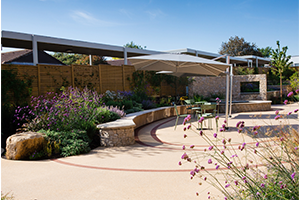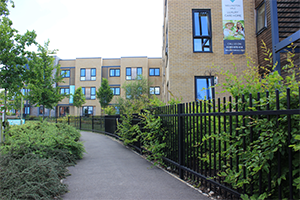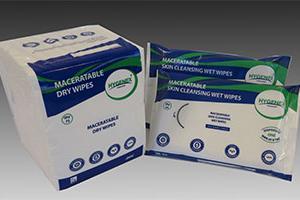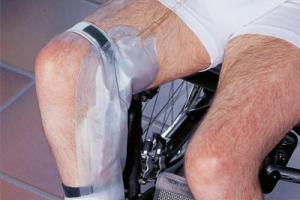Using unflushable cleansing wipes in care homes and hospitals is a dangerous false economy that puts lives at risk, warns infection control…
Making care home security both safe and attractive
Care home security has never been so important. The UK’s population is ageing at a significant rate, with the proportion of those aged 65 and above now making up 18% of our population, says Peter Jackson, MD at Jacksons Fencing.
Currently, just under half a million people (4% of the population) in the UK reside in care homes, and with a predicted 24.8% of the population over the ages of 65 by 2050, demand on these buildings is likely to continue to rise.
These often-large premises operate all day, every day, and given the constant, essential work carried out by care home staff, the utmost must be done to ensure their wellbeing and protect them from physical attack. Residential care homes often house high volumes of expensive items, including specialist medical and IT equipment, as well as personal possessions belonging to the residents. This makes them hugely attractive targets for thieves looking for an easy loot. 
So what needs to be considered, and whose responsibility is it to ensure these homes are safe and secure?
Fundamentally, the responsibility lies with the facilities managers, care home owners and specifiers to incorporate carefully balanced physical security strategies to protect people and property alike. As demand for care homes rises, fencing, gates, storage enclosures and access control are all crucial components needed to secure this sector, enabling it to operate effectively 365 days a year.
Effective access control
Care homes should provide restful environments for residents while allowing for the fast-paced environment of busy staff, who are often responsible for the welfare of numerous patients. To ensure this happens, efficient, seamless access is key. All gates and access points around the perimeter must be assessed and considered, and should be installed and controlled centrally or be regularly monitored.
Consider the types of vehicles that require access; the appropriate solution should ensure that, where necessary, emergency vehicles can enter and exit the site unhindered.
If automated gates are specified, internal operators are highly recommended to remove any visible signs of surveillance on display. When designing pedestrian and vehicular access, gates should be DDA (Disability Discrimination Act) compliant. Crucially, the design of fencing and gates must accommodate rapid evacuation and access for emergency services.
In terms of car parks, rising arm barriers or bollards are useful to help keep them secure, controlling access and protecting pedestrians from vehicle traffic.
Promoting wellness through aesthetics
Creating a welcoming environment is also a priority when specifying care home security. Whilst razor or barbed wire may be effective deterrents to potential trespassers, they can create an intimidating and unwelcoming aesthetic, far removed from the sense of wellbeing these developments should encourage.
A solution which offers both visual appeal and high levels of security is vertical bar security fencing or welded mesh panels. They provide strong boundary protection and excellent visibility for surveillance while offering greater protection than other alternatives.
For areas requiring a 'softer' appearance, such as gardens and outdoor recreational areas, timber fencing is an ideal option. This material has a natural, welcoming appearance and promotes a sense of wellbeing and privacy. It can also provide a high level of noise protection. This makes it well suited for acoustic fencing, which can improve recreational and recovery areas by protecting them from high levels of noise and transforming them into oases of calm ideal for recuperation.
Addressing care home security risks
Risk assessments are vital to ensuring the correct safety solution is installed. Products accredited by standards including Secured by Design or the Loss Prevention Certification Board’s LPS 1175 are proven to reduce the likelihood of crime. It’s recommended that high fencing is specified to deter climbing attempts and any external storage areas holding waste should be located away from climbing aids such as lamp posts or trees.
There are countless options when it comes to specifying effective care home security measures. The requirements for each site will be unique and should be judged on an individual basis.
Every home will require a bespoke plan of security structures to protect people, possessions and property while upholding the restful ambience of these crucial establishments.





